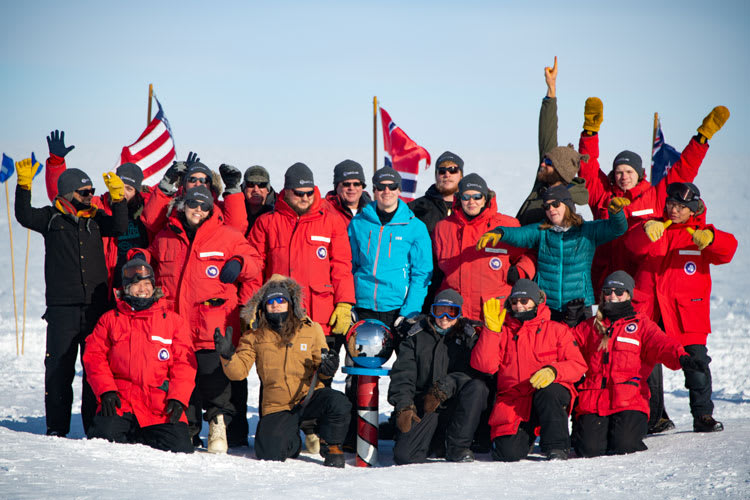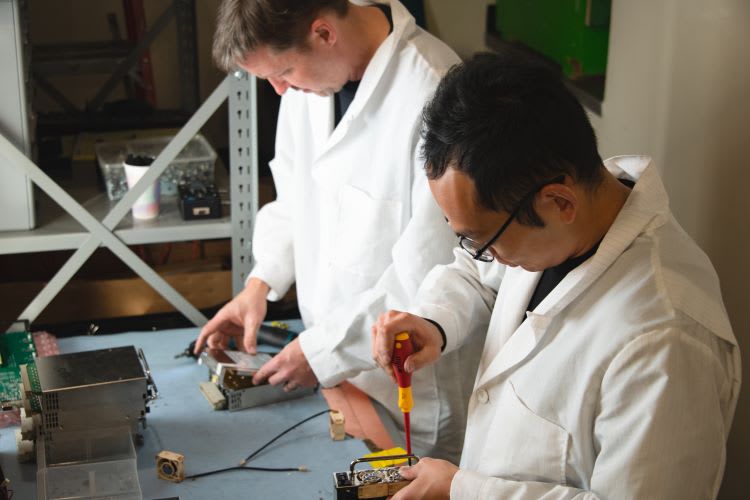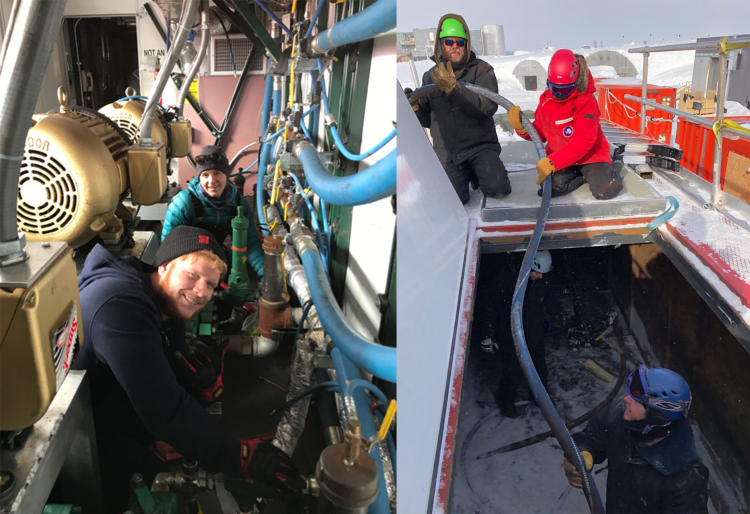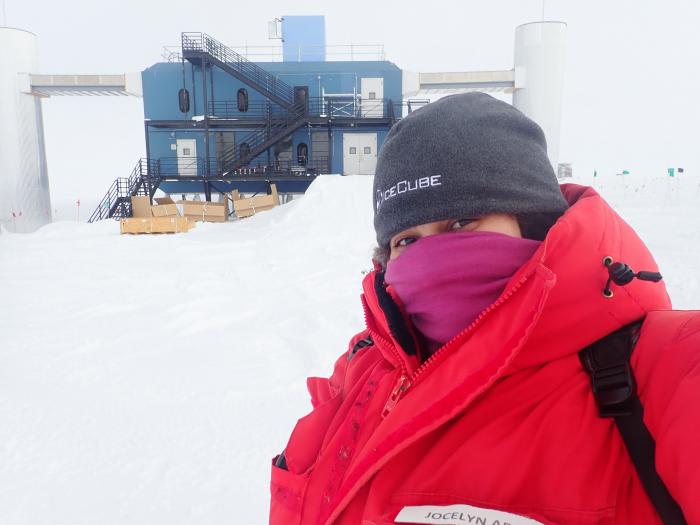As of February 14, 2020, the South Pole if officially closed for the season. Everyone in our summer crew has departed, leaving 42 intrepid individuals—including IceCube’s own winterovers, John and Yuya—to keep things running smoothly all winter long.
This summer season, IceCube sent more than 30 people from 12 institutions to the Pole to work on a variety of tasks to maintain and upgrade the observatory. In addition, the crew was helped by PolarTREC educator Jocelyn Argueta, and photographer Shaun O’Boyle toured the Pole for a week as part of the NSF Antarctic Artists and Writers Program.

Unfortunately, logistics at the Pole this austral summer did not go as smoothly as we would have liked. “This season was tough,” says Ralf Auer, current winterover manager for IceCube. A combination of mechanical issues with planes and high demand across the Antarctic continent led to delays in cargo delivery. Once the cargo arrived, our resolute Pole crew had to work double or triple shifts to catch up with schedules.
At the IceCube Laboratory (ICL), the crew replaced 25 computing servers, including the data-taking servers, core infrastructure servers, and IceCube Live and database servers. They also performed some power supply maintenance and hard drive replacements on all the DOMHub readout computers, including completing an upgrade to more reliable and higher-efficiency DOM power supplies. Also in the ICL, they replaced about 200 worn-out power supply fans.

One group was assigned to work on SPICEcore, an ice core borehole about one kilometer away from the IceCube array that’s now used for measuring ice properties. They were tasked with deploying six calibration instruments known as “loggers” down the borehole: an ultraviolet logger, a luminescence logger, a radio pulser, a dust logger, and two other glaciology instruments.
But the aforementioned cargo delays hit their group especially hard—everyone involved in SPICEcore had to extend their stay at the Pole by about 10 days. An issue with the winch cable put a stop to all logging activities. However, all equipment was safely recovered, and almost all of the logging was completed.

In another unexpected turn of events, a bulldozer cut through an optical fiber while removing one of the old Askaryan Radio Array (ARA) wind turbines at the ICL, which caused some downtime. Everything was repaired, and the crew was able to finish most of their tasks for the season, including upgrading some scintillator panels and setting up some of the new radio prototype antennas.

The surface array summer crew also deployed a new raised field hub containing power distribution, communications over fiber, and data acquisition electronics; eight new scintillator panels for IceTop snow mitigation and cosmic ray studies; and another antenna for cosmic ray studies, bringing the total up to three. They also refurbished/upgraded the two IceACT telescopes.
One of the more physically demanding tasks may have been repairing two ARA stations, which involved digging up the buried electronics vaults and replacing or repairing some of the components inside.

Work on the IceCube Laboratory was completed at “literally the last minute,” says Auer. Now everything is prepared for the upcoming winter.
Despite all the delays, the IceCube team got a lot done in a short amount of time, and we are very grateful for all their hard work.
Preparations for the IceCube Upgrade
Last summer, the National Science Foundation announced funding for the IceCube Upgrade. Preparations have already begun, and drilling is scheduled for the 2022–23 austral summer season.
This season, the summer crew was able to inventory, clean, service, and test many of the original drill camp buildings, including the main heating plants and pump and pressure systems. They also serviced and tested the generators and the power distribution module in McMurdo Station and prepared them for transport to the South Pole, did electrical work on the South Pole buildings, tested reels and motor drives, and scouted the ICL grid east cable tower for potential Upgrade surface cable installation.

Outreach at the Pole

Since 2016, IceCube has partnered with the NSF-funded PolarTREC program to deploy an educator to the South Pole to assist with IceCube projects. This year, we sent bilingual scientist-performer Jocelyn Argueta to the Pole for four weeks. Argueta has a nationally touring one-person science show, “Jargie the Science Girl,” where she presents science concepts in a fun and engaging way for young audiences. She posted regular journal entries in both English and Spanish.

IceCube also welcomed photographer Shaun O’Boyle, who was stationed at the South Pole for a week through the NSF Antarctic Artists and Writers Program. His stunning photos of science at the Pole were featured on Smithsonian Magazine’s Instagram account in November. You can find his work on his websites: www.shaunoboylephoto.com and www.oboylephoto.com.